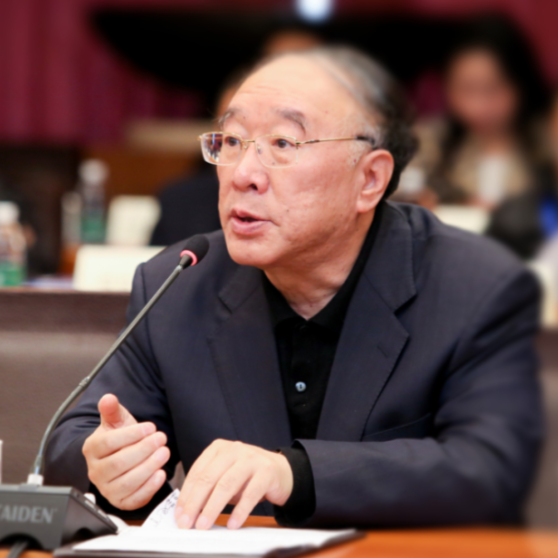Cook’s Response to Trump Clarified China’s Development
Over the past decade, China has significantly reduced its import tariffs. In 2010, the average Chinese import tariff was around 27%, but by 2015, this number had dropped to 15%. By 2023, the tariff will be further reduced to approximately 6%. Import tariffs are expected to fall below 5% in 2024 or 2025. It’s worth mentioning that the average import tariff in developed countries is about 5%, which China will also reduce to this level. Reducing import tariffs encourages international goods to enter the Chinese market and allows Chinese consumers to utilize excellent products worldwide.
Regarding investment policy, China has mainly focused on attracting foreign investment in the past few decades. The current Chinese investment policy encourages foreign investment to enter China and Chinese enterprises to invest abroad. From 2017 to 2022, Chinese annual overseas investment exceeded 110 billion US dollars, and the cumulative investment was close to 600 billion US dollars. Simultaneously, China has received an average of about 160 billion US dollars of foreign investment annually, totaling 800 billion US dollars.
In contrast, China’s total overseas investment did not exceed 500 billion US dollars in more than 30 years (1980-2010), but it has surpassed this number in just five years. This change is closely related to the “One Belt, One Road” initiative and its strategic integration policy with world development. Affected by the internal circulation of the large Chinese market, China’s economic trend has been exciting. The results and effects far exceed those of previous decades.
 Photo of freight train X8157 departed from Xi’an, the capital city of Shanxi Province, to Malaszewicze, Poland on May 25, 2024, marking a significant milestone as the 90000 th China-Europe freight train trip. According to Xinhua News, the total value of cargo carried by China-Europe frieght trains has surpassed 380 billion U.S dollars by 2024. (Xinhua/Zhang Bowen)
Photo of freight train X8157 departed from Xi’an, the capital city of Shanxi Province, to Malaszewicze, Poland on May 25, 2024, marking a significant milestone as the 90000 th China-Europe freight train trip. According to Xinhua News, the total value of cargo carried by China-Europe frieght trains has surpassed 380 billion U.S dollars by 2024. (Xinhua/Zhang Bowen)
This is reflected explicitly in three aspects:
1) the most important thing for a country’s foreign economy is the export structure of its products worldwide.
2) the impact of the manufacturing method of this country’s manufacturing industry on the world.
3) A country’s openness level is also reflected in whether it attracts capital investment worldwide.
This capital investment not only represents the investment of hot money in foreign exchange and stock speculation, but more importantly, it is reflected in FDI -Foreign Direct Investment by foreign industrial and commercial enterprises. These enterprises’ investments will bring capital, technology, industrial chains, equipment, and markets.
Besides, Chinese export products have undergone fundamental and structural changes in the past ten years.
In 2010, China’s imports and exports reached 3 trillion US dollars, of which exports approximately accounted for 1.5 trillion US dollars. At that time, more than 70% of the textiles, clothing, bags, toys, and light industrial export products were labor-intensive, and more than 20% were mechanical and electrical products. By 2023, China’s import and export trade volume had reached 6.3 trillion US dollars, of which exports accounted for 3.3 trillion US dollars. The export volume has more than doubled compared to 2010. But more importantly, the export structure has also changed.
Of the 3.3 trillion US dollars, mechanical and electronic products with high technology content and high added value contributed about 90% of the export value, worth nearly 3 trillion US dollars. Besides, the proportion of labor-intensive products has dropped from more than 70% in 2010 to just 10% in 2023. If you look at light textile products, you will mistakenly believe that the Chinese light textile industry is depressed. But if you consider it carefully, wasn’t this trend the same when Europe dumped labor-intensive products into Japanese and South Korean markets in the 1960s and 1970s, and in the 1970s and 1980s, Japan and South Korea further dumped it into the Chinese market? So now, China has dumped all these labor-intensive goods into Southeast Asia and Indian markets. The cost of labor in China has more than doubled compared to 10 years ago, and it is normal for labor-intensive products to become less competitive. Simultaneously, abundant Chinese companies started to transfer their capital to Southeast Asia to establish foreign-funded Southeast Asian enterprises. However, The Chinese government never prevented the capital transfer because it considered this process a natural result of “Asian integration.” Besides, the raw materials and critical components of products assembled by these companies in Southeast Asia may come from China. Therefore, in 2019, the trade volume between the ten Southeast Asian countries and China was 650 billion US dollars; by 2022, this number has exceeded 1 trillion. In just a few years, bilateral trade volume between China and Southeast Asia has increased by 50%. This is a good trend.
 This photograph taken on September 21, 2021 shows workers wearing face masks while working at the Maxport factory, which makes activewear for various textile clothing brands, in Hanoi. (Photo by Nhac NGUYEN / AFP)
This photograph taken on September 21, 2021 shows workers wearing face masks while working at the Maxport factory, which makes activewear for various textile clothing brands, in Hanoi. (Photo by Nhac NGUYEN / AFP)
More than 30 years ago, 50% of the world’s shipbuilding demand was supplied by Japan; 10 years ago, 50% was supplied by South Korea. The Chinese shipbuilding industry now accounts for 50% of the world’s shipbuilding demand. We used to say that once we offered one billion shirts to exchange for one imported Boeing aircraft. Now, this era has passed and has changed to a time when a lot of equipment and electronic products from China are exported in exchange for grain, pork, underground minerals, or some other products we need. In short, the changes in the structure of export products are trendy and structural. This progress is extraordinary. It is also the most eye-catching result after China implemented the reform and opening-up policy.
 Hudong-zhonghua shipbuilding factory in Shanghai.
Hudong-zhonghua shipbuilding factory in Shanghai.
For international trade, China’s industrial-scale reached first place in the world in terms of production methods in 2010. Nevertheless, 40% to 50% of the total is processing trade. Processing trade is when countries import raw materials and semi-finished products from abroad and assemble them domestically for export. For example, of the US$100 billion worth of export products, as much as $80 billion comes from imported parts, raw materials, and semi-finished products, which are processed and assembled before being sold abroad. The total value of Chinese import and export trade is 180 billion US dollars, but the actual output value included in the GDP is only about a few billion US dollars. This is because the course of work also includes water consumption, electricity, and other side deductions. The total corporate profits, employee income, and national taxes only account for more than ten percent of the gross export trade volume. Therefore, processing trade only “grows in size but not in flesh” (the trade volume is high, but the actual added value is relatively low). Only in the absence of other higher-quality economic activities and a surplus of labor can the appropriate development of processing trade be considered.
However, once a country becomes stronger, this processing trade model should be gradually transferred to other countries. Southeast Asia accounts for more than 50% of the processing trade share. They also import raw materials, parts, and semi-finished products from China at one end and then export them to European and American markets after processing. Before 2010, 50% of Chinese manufactured goods were processing trade, and more than 30% were general trade. General trade is defined as building the domestic industrial chain and then exporting the products; agricultural products, raw materials, and primary products account for roughly 10%, of which do not need to be manufactured. Now, among Chinese imported and exported products worth more than 6 trillion US dollars, the proportion of products made by processing trade has dropped from 50% to less than 20%. In general manufacturing, China’s own industrial chain clusters account for 70% of the products; the remaining 10% are agricultural products, or raw materials dug out of the ground. People can take a look at these processing methods. This is our industrial chain cluster. The past ten years’ chain expansion, strengthening, and replenishment results have enabled us to possess the world’s largest and most complete industrial chain. In this sense, this is an essential trend in Chinese manufacturing and economic development.
In addition, everyone is most concerned about the introduction of foreign capital. Everyone always perceives that in the past ten years, China’s foreign investment seems to have decreased due to Trump’s trade war and divestment policies and the clique-making, geopolitical manipulation, and anti-globalization practices initiated by the Biden administration.
However, this intuition-based feeling is not necessarily accurate. We must rationally analyze the data in international trade to draw clear conclusions. In terms of the introduction of foreign investment, from 1980 to 1990, the average annual value of foreign investment introduced was between 40 billion and 50 billion US dollars; from 1990 to 2000, the average annual value of foreign investment introduced was between 80 billion to 90 billion US dollars; from 2000 to 2010, Chinese annual introduction of foreign investment ascended to 120 billion US dollars. You may speculate that the foreign investment introduced between 2012 and 2022 seems to diminish comparatively. However, we have introduced more than 140 billion U.S. dollars of foreign investment annually during this decade, with an average annual increase of 20%. In addition, some people will ask whether the foreign investment introduced in the first five years was relatively high, while the last five years were relatively low because China experienced a trade war and suffered from the epidemic. But, in the past five years, the average value of the introduction of foreign investment by China was 160 billion US dollars per year. In the previous years, from 2010 to 2016, the average foreign investment introduced was roughly US$130 billion. This shows that even though China has confronted the American anti-globalization and trade war, businessmen are still running businesses and following the laws of the market economy. This trend will not change. For example, Tesla first invested 5 billion US dollars in Shanghai in the past few years, then added 5 billion more, totaling 10 billion US dollars. Besides Tesla, Apple has invested more than 10 billion US dollars in China, reaching the level of production of 170 million mobile phones every year in China. This model has lasted for more than a decade.
 Tim Cook, CEO of Apple, meets with Chinese commerce minister Wang Wen Tao in China in October, 2023.
Tim Cook, CEO of Apple, meets with Chinese commerce minister Wang Wen Tao in China in October, 2023.
Former US president Donald Trump once questioned Apple in 2017 about why such large-scale investments were deployed in China but not in the US, Brazil, or Mexico. Apple CEO Tim Cook responded to Trump calmly: “Twenty years ago, I had a large Apple factory in the United States that produced both computers and mobile phones, but it was not profitable.” Cook further addressed that: “In China, we sold 170 million mobile phones annually, with 170 billion US dollars in revenue. Due to the low manufacturing costs in China, we can achieve a gross profit margin of 40%, which is over 60 billion US dollars. Chinese companies take away more than 10 billion annually, and Apple receives 50 billion US dollars annually. In this sense, which one do you prefer? An Apple headquartered in the US but unprofitable, or an Apple headquartered in the United States but has a production base in China that can bring back 50 billion US dollars yearly?”Trump, who is a real estate developer, did not understand this. He further asked Cook why this was happening. Cook explained that the vast domestic market demand is a critical factor in attracting world investment in China; Second, a large market will decrease the fixed asset investment, unit logistics costs, unit scientific research and development costs, and unit procurement costs of the manufacturing enterprise. Therefore, the overall manufacturing cost of the Chinese manufacturing industry had been relatively low.
Even though labor costs have risen in the past decade, the advantage of low-cost labor has gradually weakened in China’s demographic dividend over the past few decades, but, driven by the large-scale effect, the comprehensive manufacturing costs of the Chinese manufacturing industry have still reduced in many aspects. This reduction contributes to the formation of a production-based sales model in China. The so-called production-based sales means that all products invested in and produced by foreigners are sold to the global market. Why do foreign enterprises choose to produce in China? Because the production cost is low.
This is the effect of China’s opening up to the outside world. These effects have also influenced investors worldwide, entrepreneurs, and even politicians who disliked China. Friendly people are more willing to cooperate with China, while unfriendly people work harder to suppress China. But no matter what, this is the law of economics, and the world will ultimately obey it.
Editor: Sam




